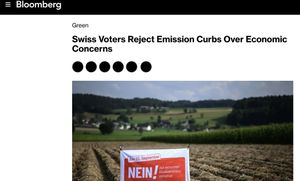Researchers have made strides in utilizing graphene oxide-based membranes to demineralize sweet whey, which is often regarded as waste from cheese production. The study, conducted by a team led by Mina Rezapour, explores the design and modeling of advanced nanocomposite systems, aiming to provide effective solutions for turning environmental challenges around whey disposal and enhancing its usability.
Whey, particularly sweet whey, is produced as a by-product of the cheese-making industry and contains high levels of organic and mineral substances. Historically, this makes it difficult to utilize effectively within food formulation. The newly developed technique employs nanofiltration (NF) systems with graphene oxide (GO)-modified membranes—ideal for separating harmful salts from whey without compromising the nutritious components like proteins.
Notably, the research revealed significant findings about the influence of various operational parameters on membrane performance. It was discovered, as Rezapour noted, "Among the input variables, the pH of the whey solution has the greatest effect on membrane flux and salt rejection performance." Strikingly, optimal conditions were identified as being at pH levels above the isoelectric point of whey proteins, which fosters enhanced salt separation.
The study was performed at the Pegah West Azerbaijan Company, where the researchers employed different experimental setups, including laboratory scale dead-end filtration systems. This comprehensive approach included adjusting variables like transmembrane pressure (TMP), temperature, and feed pH. It highlighted how the functionality of the membranes could be drastically improved through the addition of GO, which enhances membrane hydrophilicity and fouling resistance.
The researchers also implemented convolutional neural network (CNN) models to predict dynamic flux patterns based on factors such as the Reynolds number and TMP. "The CNN model correlates well with experimental data on dynamic flux (R2–1.00)," the authors stated, indicating the high reliability of their predictive models.
The resulting data from the study indicated increased permeate flux at elevated temperatures, attributing the rise to reduced viscosity of the whey solution. The findings signaled improved performance for the newly developed GO-modified nanocomposite membranes, which exhibited superior salt rejection rates, increasing from 21% with pure membranes to 31% with the modified membranes.
The measured effectiveness at higher temperatures demonstrated up to 29.3% increase in permeate flux, which showcases the potential for scaling these processes industrially. The investigation takes another leap by addressing the rising concern of environmental pollution due to whey disposal, offering practical solutions for sustainable practices within the food processing industry.
Overall, these developments indicate significant potential for advancing whey processing technologies. The study provides insights not only on practical applications of modified membranes but also emphasizes the effectiveness of machine learning tools like CNN models for predicting key parameters. This knowledge could lead to not only enhanced efficiency and effectiveness for large-scale processing of whey and its utilization but also to strengthened environmental protection efforts.



